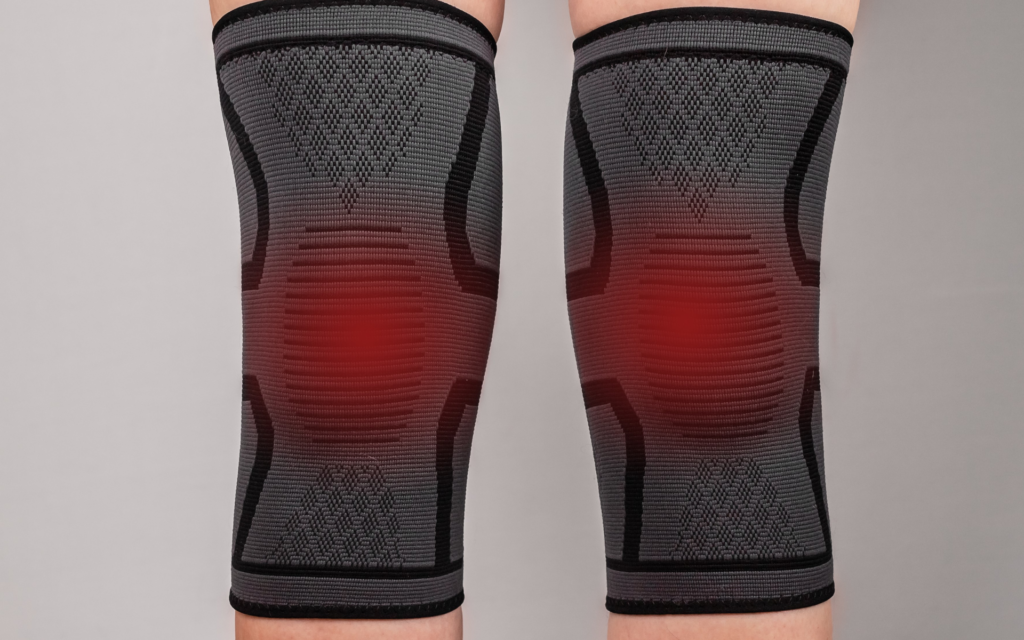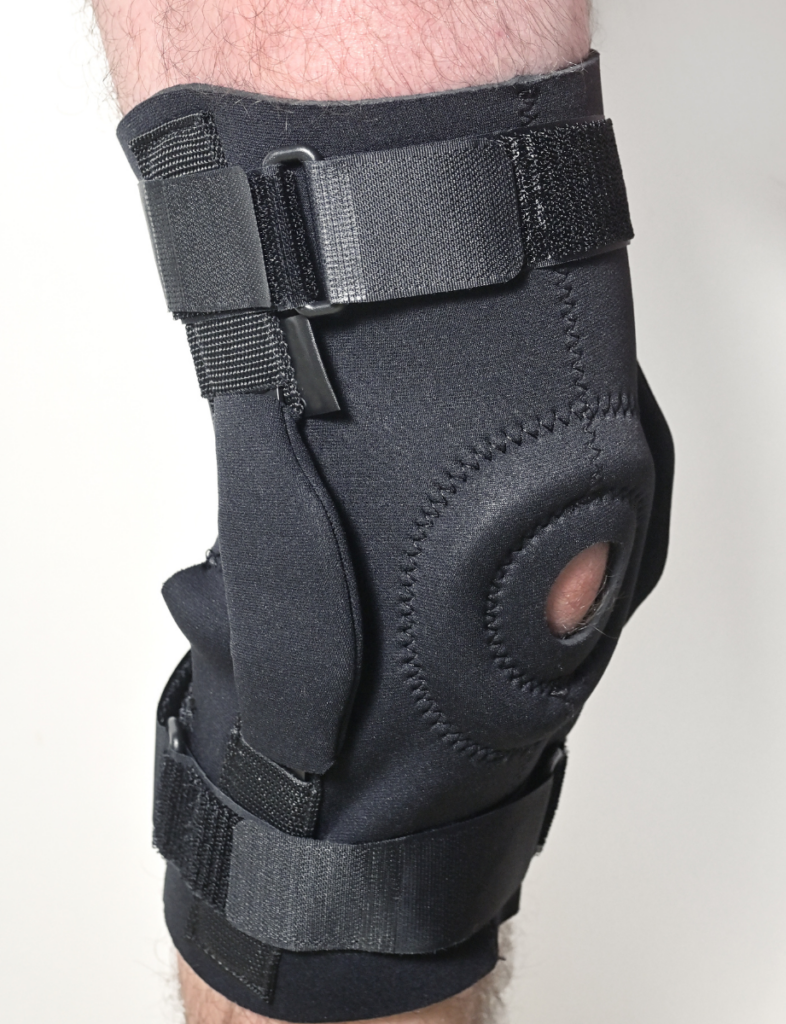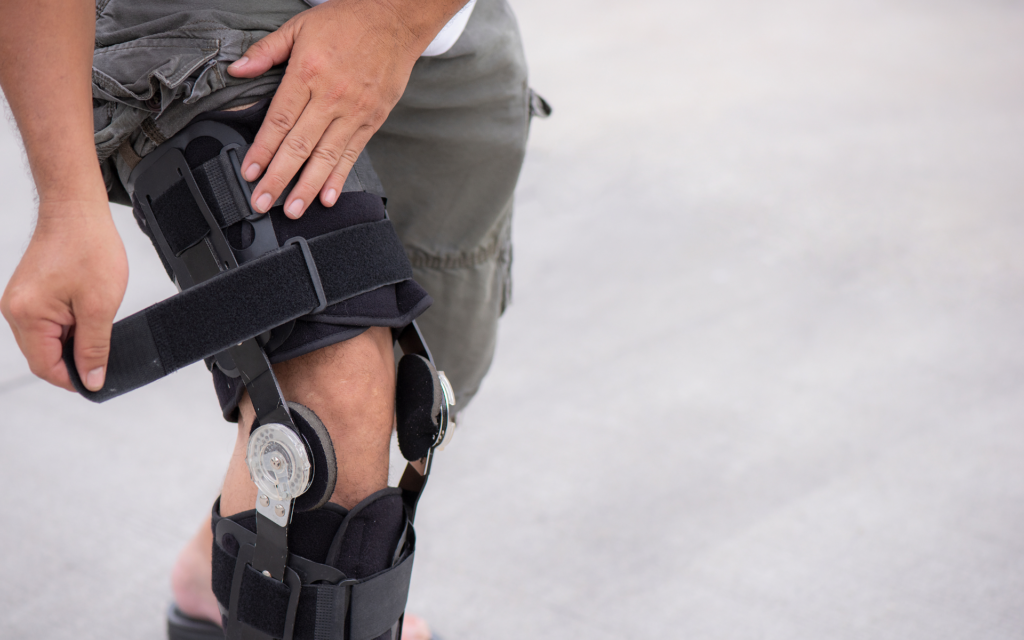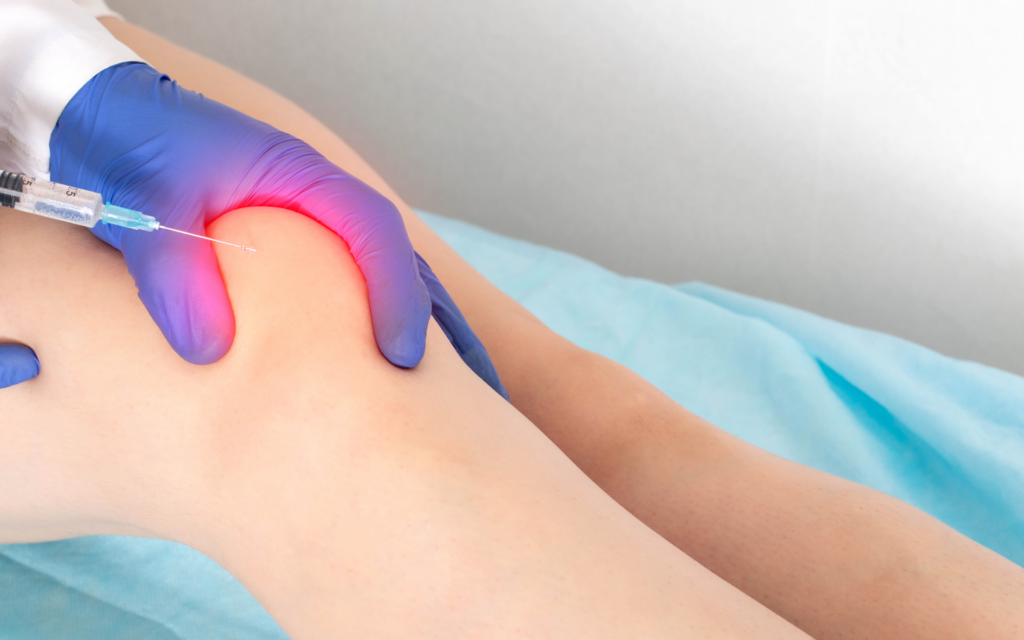Osteoarthritis, a common affliction characterised by the gradual deterioration of joint cartilage and underlying bone, particularly affects the knees, often leading to discomfort and reduced mobility. In the pursuit of alleviating this discomfort and supporting knee health, knee braces have emerged as a viable solution. But when should one consider wearing a knee brace for osteoarthritis? How effective are they in providing relief? And what benefits do they offer? Looking into these questions can provide valuable insights for those seeking relief from osteoarthritic knee pain.
When to Wear a Knee Brace for Osteoarthritis?
Determining the optimal time to incorporate a knee brace into your osteoarthritis management plan requires a comprehensive evaluation of several key factors. Firstly, assessing the degree of discomfort and functional limitations experienced due to osteoarthritic knee pain is paramount. Individuals grappling with mild to moderate discomfort during routine activities such as walking, climbing stairs, or standing for prolonged periods may find significant relief by integrating a knee brace into their daily routine.
Moreover, individuals seeking to safeguard their knee joint from further strain or injury during physical exertion can benefit from the protective properties of a knee brace. Whether partaking in low-impact exercises like walking or cycling or engaging in more strenuous activities such as hiking or playing sports, wearing a knee brace can help stabilise the joint, reduce the risk of exacerbating existing symptoms, and promote safe movement patterns.
Furthermore, considering the progressive nature of osteoarthritis, preemptive use of knee braces may prove advantageous in delaying the onset of symptoms or preventing their worsening over time. By proactively addressing joint instability and discomfort, individuals can potentially slow the degenerative process and maintain a higher level of function and independence for longer periods.
In essence, the decision to wear a knee brace for osteoarthritis should be guided by individual needs, preferences, and activity levels. Whether aiming to alleviate existing discomfort, prevent injury during physical activity, or proactively manage joint health, incorporating a knee brace into your daily routine can offer significant benefits and improve overall quality of life. Consulting with a pain specialist can provide valuable insights and recommendations tailored to your specific circumstances, ensuring optimal outcomes and effective management of osteoarthritic knee pain.
How Effective Are Knee Braces in Osteoarthritis Relief?
The efficacy of knee braces in addressing osteoarthritic pain is a multifaceted subject that hinges on a range of factors, each influencing the outcome to varying degrees. Firstly, the severity of the individual’s osteoarthritis plays a crucial role in determining the effectiveness of knee braces. For individuals with mild to moderate osteoarthritis, knee braces may offer significant relief by providing support and stability to the affected joint, thereby reducing discomfort and improving functionality. However, for those with advanced osteoarthritis characterised by extensive cartilage damage and joint degeneration, the benefits of knee braces may be more limited, as the structural integrity of the joint is compromised to a greater extent.
Additionally, the type of knee brace worn can significantly impact its effectiveness in relieving osteoarthritic pain. While various types of knee braces are available, each catering to specific needs and preferences, certain designs, such as unloader braces, have been shown to be particularly effective in redistributing weight away from the affected joint. By offloading pressure from the damaged area, these braces can alleviate pain and improve mobility, allowing individuals to engage in activities with greater ease and comfort.
Moreover, the consistency and compliance with which individuals wear their knee braces also play a pivotal role in determining their effectiveness. Adhering to a prescribed wearing schedule and utilising the knee brace during appropriate activities can maximise its benefits and facilitate optimal outcomes. Consistency in brace usage not only ensures continuous support and protection for the affected joint but also allows for better adaptation and adjustment to the brace over time.
While knee braces cannot reverse the structural damage caused by osteoarthritis, they can provide meaningful symptomatic relief by reducing pain, improving joint stability, and enhancing mobility. The effectiveness of knee braces varies depending on factors such as the severity of osteoarthritis, the type of brace worn, and compliance with usage.
What Are the Benefits of Wearing Knee Braces for Osteoarthritis?
Wearing knee braces for osteoarthritis offers a multitude of benefits aimed at enhancing knee health and overall well-being. These benefits include:
Aligning Your Knees
Proper alignment of the knee joint is essential for reducing stress on the affected areas and promoting optimal biomechanics. Knee braces designed to align the knees play a pivotal role in this regard by providing targeted support to the joint. These braces reduce pressure on damaged cartilage by redistributing forces across the joint surface, which lessens osteoarthritis pain. Maintaining correct alignment also contributes to the long-term health and functionality of the knee by halting additional joint degeneration. Particularly during weight-bearing activities, when the knee is under more stress, this alignment support is essential. Knee braces help people participate in activities with more comfort and confidence by ensuring proper alignment, which lowers the risk of injury and improves quality of life overall.
Easing Pain
Pain relief is a primary objective in the management of osteoarthritic knee pain, and knee braces are instrumental in achieving this goal. Knee braces effectively reduce pain and discomfort by supporting the injured joint and lessening the strain on the damaged cartilage. For those who are experiencing osteoarthritic pain, these braces’ compression and stabilisation help to relieve pressure on delicate nerve endings, providing instant relief. Moreover, by promoting proper alignment and biomechanics, knee braces address the underlying causes of pain, rather than simply masking symptoms. This comprehensive approach to pain management ensures consistent relief, allowing individuals to perform daily activities with greater ease and comfort. Whether worn during leisurely strolls or intense physical activities, knee braces offer reliable pain relief, enabling individuals to maintain an active lifestyle and improve their overall well-being.
Allowing Ligaments to Heal
In addition to pain relief, knee braces play a crucial role in facilitating the healing process of damaged ligaments and tissues associated with osteoarthritis. Braces facilitate the healing and regeneration of injured ligaments by stabilising the knee joint and preventing overuse. Minimising movement is crucial for the best healing during the acute phase of an injury or inflammation, which is when this stabilisation support is especially helpful. Knee braces ease pain, aid in healing, and facilitate a person’s ability to regain strength and mobility by lessening the strain on damaged ligaments. Additionally, by providing support and protection to vulnerable ligaments, knee braces reduce the risk of re-injury, thereby facilitating long-term joint health and functionality. This comprehensive approach to healing ensures a faster and more complete recovery, enabling individuals to return to their daily activities with confidence and peace of mind.
What Are the Different Types of Knee Braces for Osteoarthritis?
Several types of knee braces are available for individuals suffering from osteoarthritis, each catering to specific needs and preferences:
Compression Sleeves for Arthritic Knees
When it comes to addressing osteoarthritis-related knee pain, individuals have a variety of knee braces to choose from, each tailored to meet specific needs and preferences. One of the most common types is compression sleeves for arthritic knees. These sleeves provide gentle compression to the knee joint, which serves to promote circulation and reduce swelling. While they offer minimal support compared to other types of braces, compression sleeves are favored for their comfortable fit and suitability for daily activities or sports. Their lightweight design makes them an ideal choice for individuals seeking mild to moderate support without sacrificing mobility.
Hinged Knee Brace
Another popular option is the hinged knee brace, distinguished by its inclusion of metal hinges on the sides. These hinges provide enhanced support and stability to the knee joint, making hinged braces particularly beneficial for individuals with moderate to severe osteoarthritis or those recovering from knee injuries. By stabilising the joint and controlling its range of motion, hinged knee braces help alleviate pain and discomfort, enabling individuals to engage in activities with greater confidence and reduced risk of injury.
Unloader Knee Brace
For individuals experiencing significant joint misalignment or unilateral osteoarthritis, unloader knee braces offer a targeted solution. These braces are specifically designed to offload pressure from the affected side of the knee joint, thereby reducing pain and improving overall function. Unloader knee braces relieve pain and improve joint alignment by shifting weight and stress away from the injured area. They are a good option for people looking for relief from the localized pain and discomfort brought on by osteoarthritis because of their focused approach.
Choosing the Optimal Knee Brace for Osteoarthritis Relief
Choosing the optimal knee brace for osteoarthritis relief is a crucial decision that requires careful consideration of several factors. Firstly, the severity of the condition plays a significant role in determining the type of brace needed. Individuals with mild osteoarthritis may benefit from a less restrictive brace, such as a compression sleeve, while those with moderate to severe osteoarthritis may require a hinged or unloader brace for enhanced support and stability.
Additionally, individual preferences and activity levels should be taken into account when selecting a knee brace. Some individuals may prefer a lightweight and discreet brace that allows for freedom of movement during daily activities, while others may prioritise maximum support and protection, especially during sports or strenuous exercise.
Consulting with a healthcare professional or orthopedic specialist is highly advisable to ensure the most suitable brace is chosen for specific needs. These experts can provide personalised recommendations based on the individual’s condition, lifestyle, and treatment goals, ultimately optimising the effectiveness of the knee brace in providing relief from osteoarthritic pain and improving overall knee health.
What to Do if Your Knee Still Hurts with a Brace?
Despite wearing a knee brace, some individuals may still experience persistent knee pain. In such cases, alternative treatment options may be explored, including minimally invasive procedures aimed at alleviating pain and promoting joint health:
Minimally Invasive Treatments
Minimally invasive treatments offer viable options for managing knee osteoarthritis, aiming to alleviate symptoms and improve joint function with less disruption to the surrounding tissues. These interventions are typically performed on an outpatient basis and involve fewer risks and complications compared to traditional surgical procedures. Let’s look at some of the most common minimally invasive treatments for knee osteoarthritis:
Coreflex Injections
Coreflex injections involve injecting a combination of corticosteroids and anesthetic directly into the knee joint. This injection can directly alleviate pain by reducing inflammation and swelling around the affected joints. As inflammation subsides, pressure on nerves is relieved, leading to decreased pain sensations.
Platelet Rich Plasma (PRP) Therapy
PRP therapy utilises the patient’s own blood plasma, enriched with platelets, to stimulate tissue repair and reduce inflammation in the affected knee joint. PRP therapy promotes tissue regeneration, speeds up the healing process, and lessens osteoarthritis pain by utilising the body’s natural healing mechanisms. This innovative treatment approach offers a safe and effective means of addressing persistent knee pain while minimising the risk of adverse effects commonly associated with more invasive procedures.
Intra-Articular Injections
Intra-articular injections involve injecting a hyaluronic acid-based substance directly into the knee joint to reduce pain and inflammation. These injections provide targeted relief by delivering medication directly to the affected area. Intra-Articular injections replenish the natural lubrication within the joint, reducing friction and promoting smoother movement.
Conclusion
Knee braces represent a valuable tool in the management of osteoarthritis-related knee pain, offering symptomatic relief, enhancing joint stability, and promoting overall knee health. By understanding when to wear a knee brace, the benefits they offer, and the various types available, individuals can make informed decisions to alleviate discomfort and improve their quality of life. Additionally, exploring alternative treatment options can provide further relief for those experiencing persistent knee pain despite brace usage.








